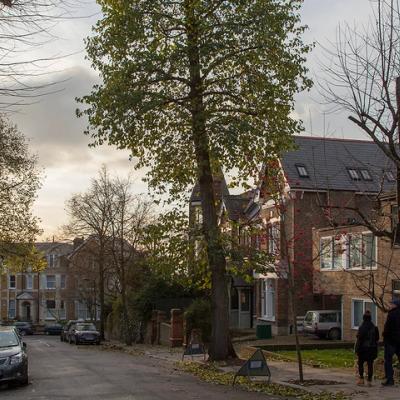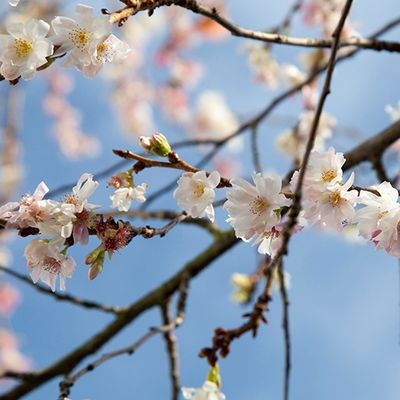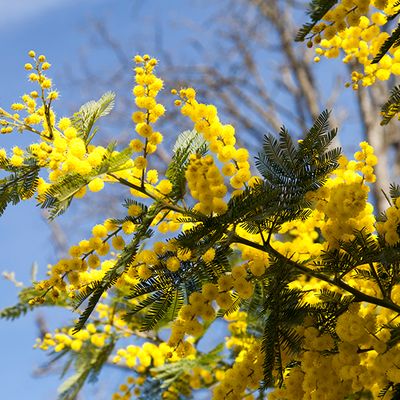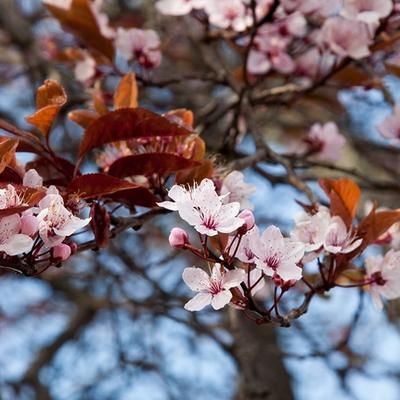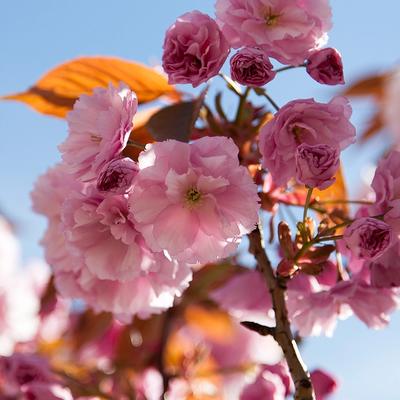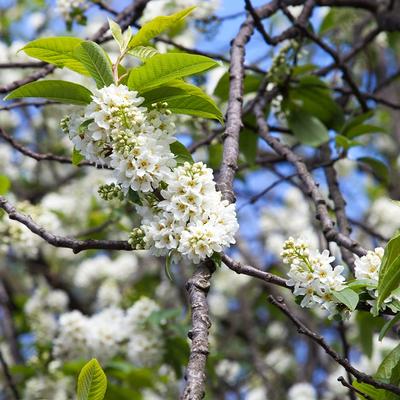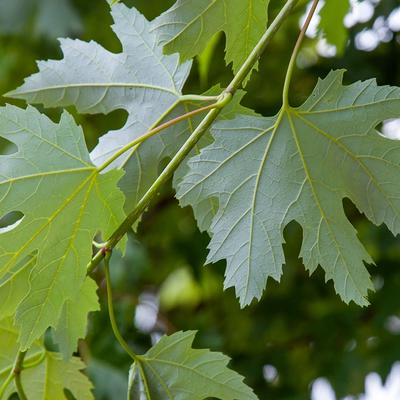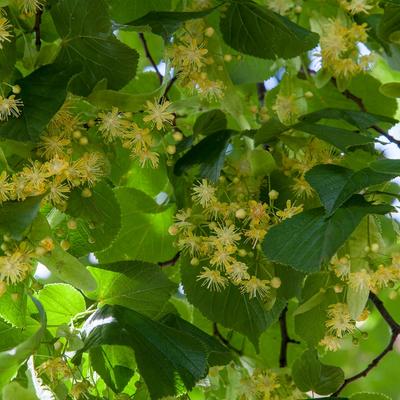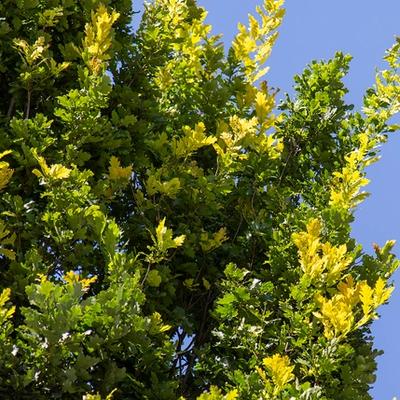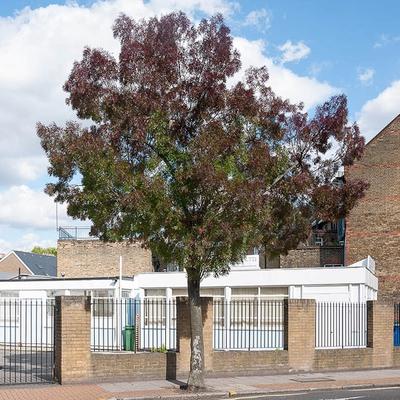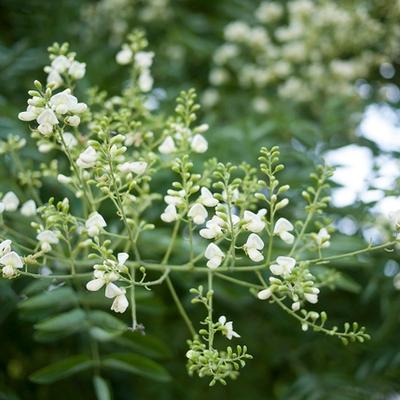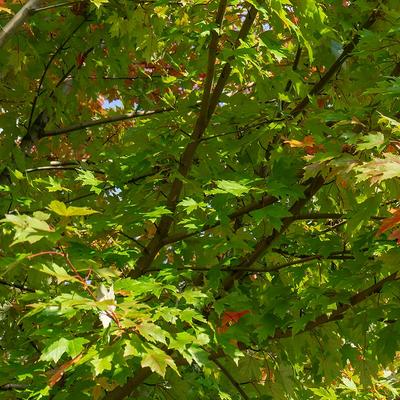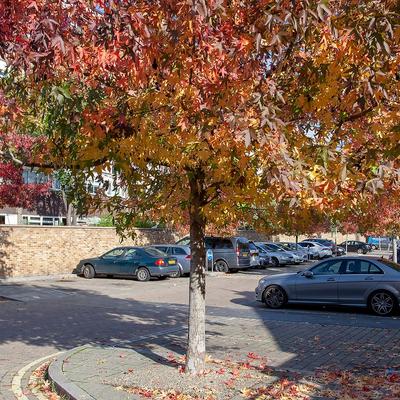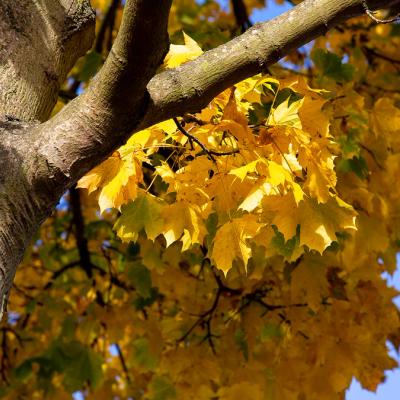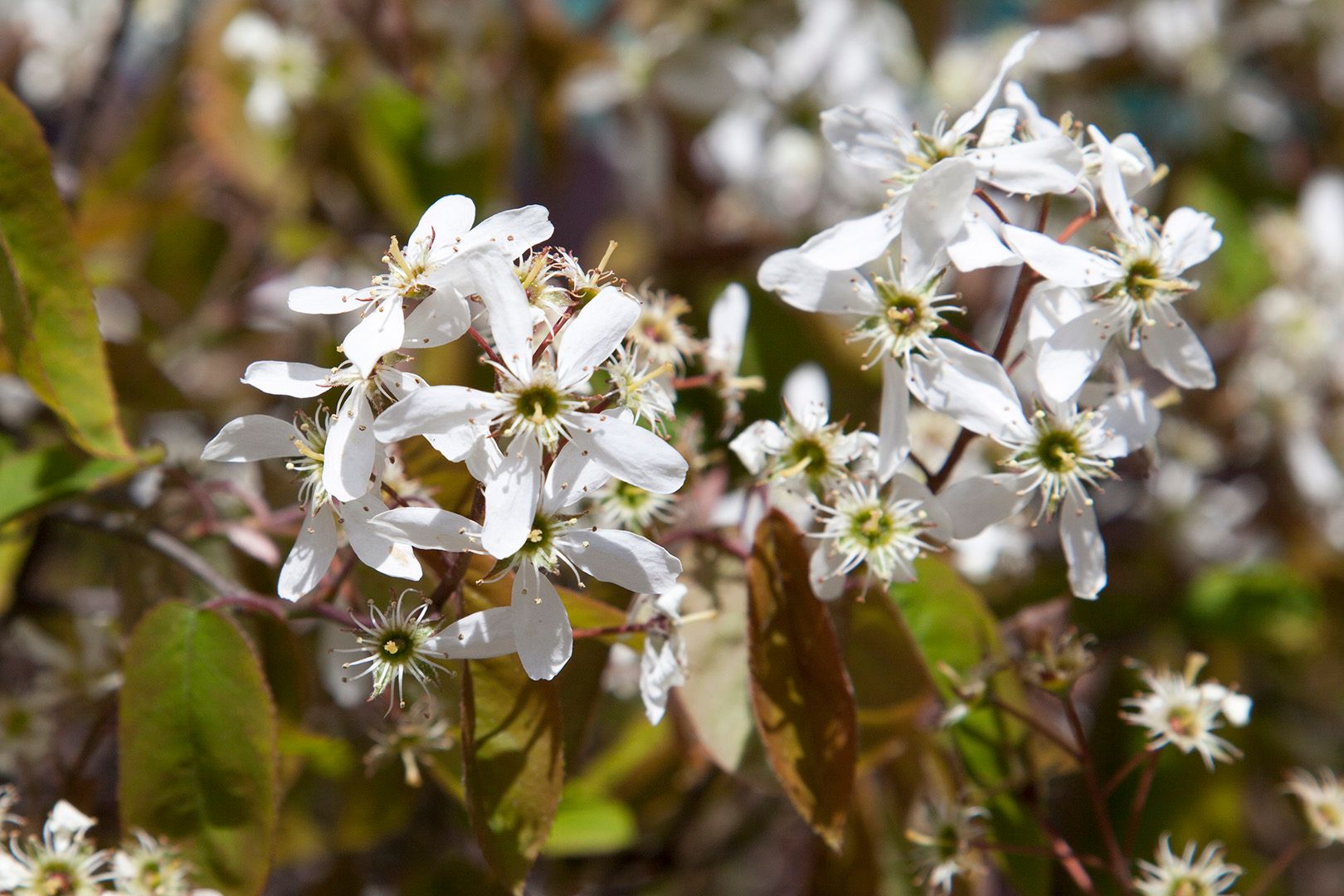
The Amelanchier genus contains several species which can be found planted in public places and private gardens in the UK. Street trees tend to be A. lamarckii, often grown as standards, that is trees with a single trunk. In gardens, multi-stemmed trees are more common. All the Amelanchiers are commonly known as juneberry or snowy mespil, and they are quite similar in appearance.
At the start of April, they produce masses of delicate white flowers which some might confuse with cherries. Unlike cherries though, Amelanchier species have small leaves and smooth, grey bark. When the flowering period conicides with cool weather, the blossom can last for some time, but if it is warm and sunny, it tends to be very fleeting. So, this is a tree for a gloomy April!
In June, the tree produces small berry-like fruit which is much appreciated by birds and squirrels, and in the autumn, leaves can take on spectacular red and orange hues.
The Amelanchier genus contains several species which can be found planted in public places and private gardens in the UK. Street trees tend to be A. lamarckii, often grown as standards, that is trees with a single trunk. In gardens, multi-stemmed trees are more common. All the Amelanchiers are commonly known as juneberry or snowy mespil, and they are quite similar in appearance.
At the start of April, they produce masses of delicate white flowers which some might confuse with cherries. Unlike cherries though, Amelanchier species have small leaves and smooth, grey bark. When the flowering period conicides with cool weather, the blossom can last for some time, but if it is warm and sunny, it tends to be very fleeting. So, this is a tree for a gloomy April!
In June, the tree produces small berry-like fruit which is much appreciated by birds and squirrels, and in the autumn, leaves can take on spectacular red and orange hues.
- Serviceberry
- Snowy Mespil

